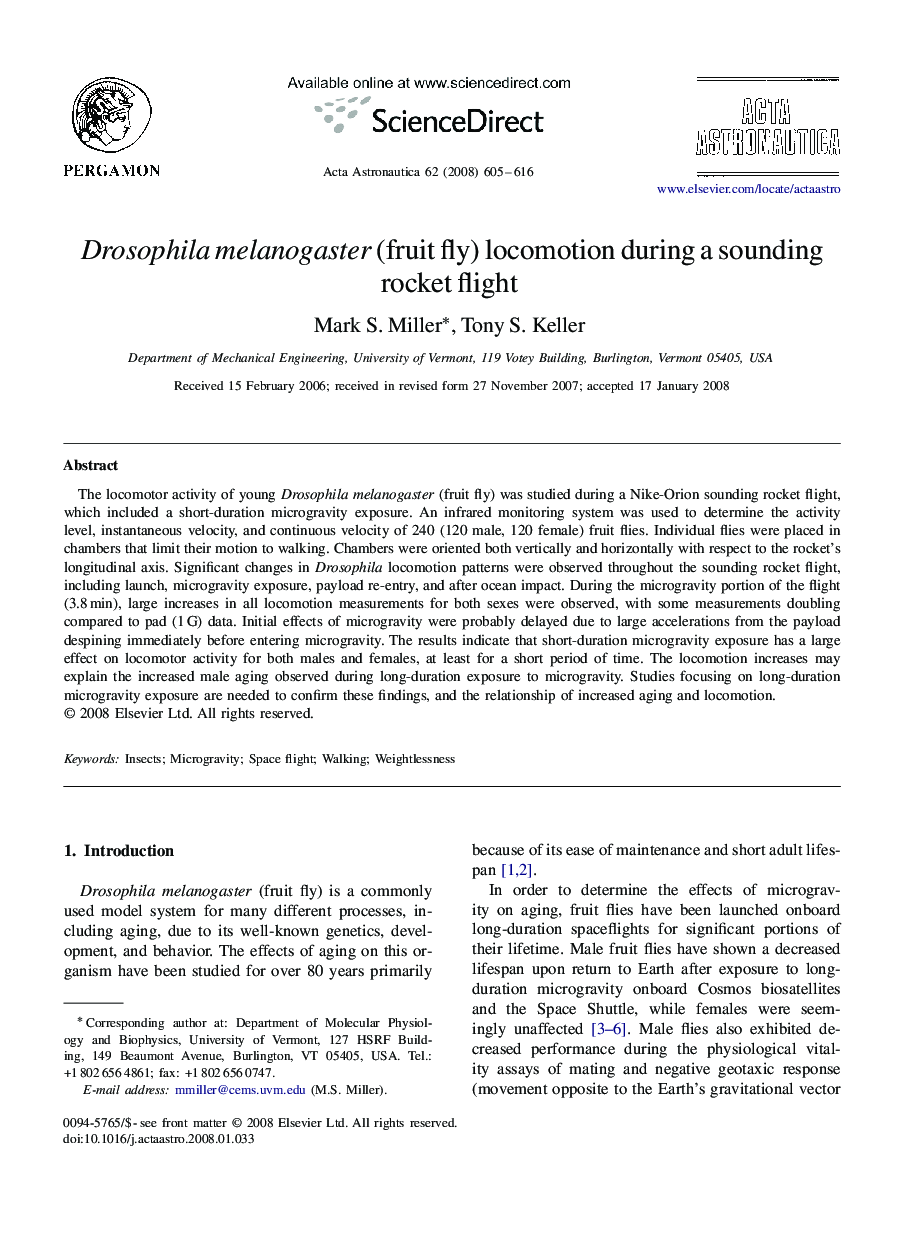| Article ID | Journal | Published Year | Pages | File Type |
|---|---|---|---|---|
| 1716883 | Acta Astronautica | 2008 | 12 Pages |
Abstract
The locomotor activity of young Drosophila melanogaster (fruit fly) was studied during a Nike-Orion sounding rocket flight, which included a short-duration microgravity exposure. An infrared monitoring system was used to determine the activity level, instantaneous velocity, and continuous velocity of 240 (120 male, 120 female) fruit flies. Individual flies were placed in chambers that limit their motion to walking. Chambers were oriented both vertically and horizontally with respect to the rocket's longitudinal axis. Significant changes in Drosophila locomotion patterns were observed throughout the sounding rocket flight, including launch, microgravity exposure, payload re-entry, and after ocean impact. During the microgravity portion of the flight (3.8Â min), large increases in all locomotion measurements for both sexes were observed, with some measurements doubling compared to pad (1Â G) data. Initial effects of microgravity were probably delayed due to large accelerations from the payload despining immediately before entering microgravity. The results indicate that short-duration microgravity exposure has a large effect on locomotor activity for both males and females, at least for a short period of time. The locomotion increases may explain the increased male aging observed during long-duration exposure to microgravity. Studies focusing on long-duration microgravity exposure are needed to confirm these findings, and the relationship of increased aging and locomotion.
Related Topics
Physical Sciences and Engineering
Engineering
Aerospace Engineering
Authors
Mark S. Miller, Tony S. Keller,
